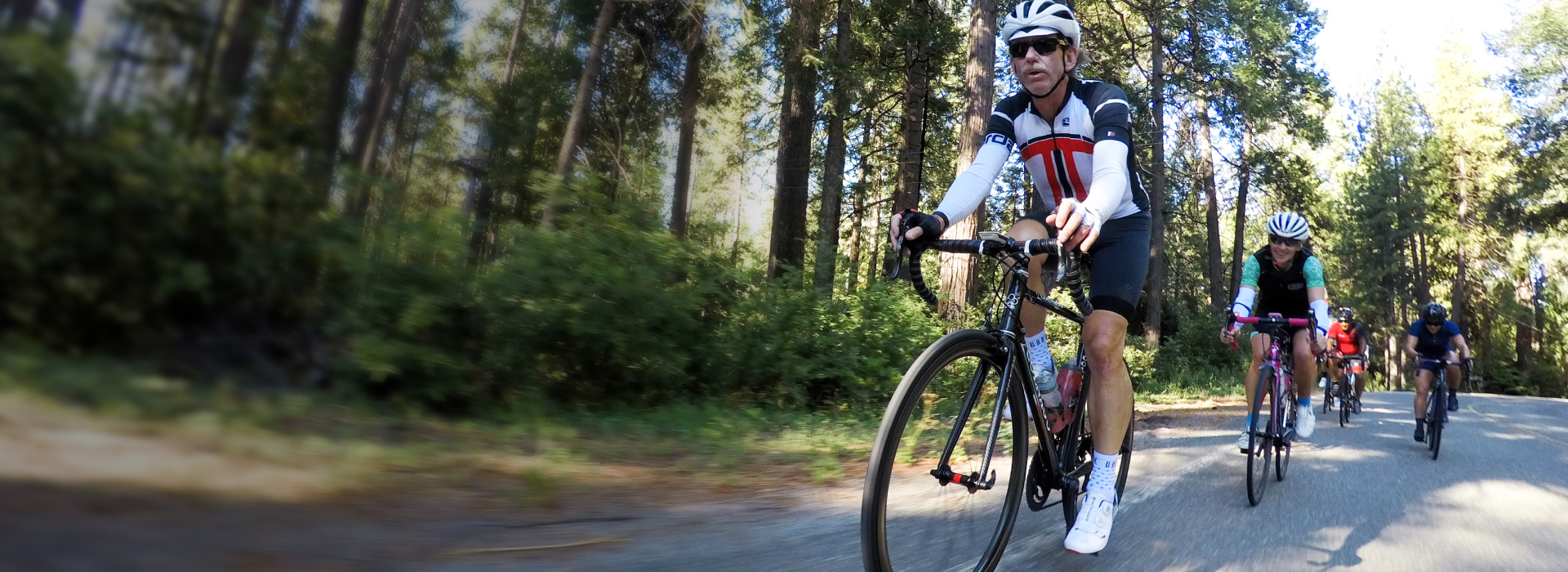
Safety is very important in Cycle Folsom. Here are core cycling skills with which every Cycle Folsom member should be familiar.
Safety is very important in Cycle Folsom. Here are core cycling skills with which every Cycle Folsom member should be familiar. If you have questions about any of these, please ask a Ride Leader and they will be more than happy to help.
Use of hand signals – Hand signals are how riders in front relay information to those behind them. You should be familiar with the generally-used signals which include, but are not limited to: debris on the road, a bump or hole coming up, move right, move left, single file, right/left turns, slowing/stopping. If it is unsafe to take your hands off the bars, you should verbally call out upcoming hazards.
Calling out directions or hazards – Verbal signals are used to call out upcoming danger when it’s unsafe to take your hand off the bars. They are also used to relay information from the back of the line to the front, i.e. ‘car back’ , ‘bike back’ or, occasionally, upcoming turns. When an emergency situation arises, verbal signals are quicker than hand signals and can convey a sense of urgency that hand signals can’t. An example would be calling out, “Stopping” when you approach an intersection just as the light turns yellow, or a car turns in front of you. A very important call is “Slowing” when you need to slow down to warn those behind you.
Holding your line – You should be able to ride straight without twitchy course corrections or a wobbly riding style. This is especially important when riding two abreast on a winding road or trail. Maintain a constant distance between you and the right side of the trail or yellow centerline, depending on whether you’re the rider on the right or on the left. Doing so should maintain the distance between you and your riding partner.
Drafting – You should be able to safely ride behind another rider with a consistent space between your wheels. To this end, there are several techniques used to keep the group tight and the riders upright and safe.
Protecting Your Front Wheel – It is your responsibility to keep a ‘safe zone’ around your front wheel when riding with others in a group. Failure to do so is one of the major causes of crashes. Overlapping the wheel in front can be very dangerous, a slight move from the rider in front while you’re overlapped will take you down but probably leave them upright. Of course, most of the riders behind you will either go down as well or be forced to take evasive action which may put them into traffic or a rock-lined drainage ditch. You also don’t want to bump the wheel in front, this is where maintaining the gap comes in. BE VIGILANT! Keep a safe zone around your front wheel at all times.
Safely Riding in Tandem – Riding side-by-side is called ‘tandem’ or ‘two-up’ riding. While next to another cyclist you want to stay even with them, handlebar-to-handlebar, shoulder-to-shoulder. Half-wheeling, where one of the two of you will stay further in front, can lead to unwanted consequences. If the rider in front suddenly slows or moves into you, the handlebars can overlap, hook together and take you both down. When you’re both even, handlebar entanglement is far less likely and touching shoulders allows a bit of a cushion and the chance to recover without crashing. In addition, carrying on a conversation is much easier when ears & mouths are in closer proximity. So, if you notice that you’re the one who keeps pulling a half wheel ahead when another rider comes alongside, slow down and stay even with your buddy.
Respecting Traffic – We have to share the road with automobiles which means we need to be alert, safe, and courteous. Expect the unexpected from cars around you – cars turning left or right in front of you, an opening car door, cars proceeding through an intersection while you’re crossing.
Intersections may be the places we have the most control of our destiny. Be on high alert as you approach an intersection and be prepared to stop quickly if necessary. If a car arrives close to the time you do, call out ‘Stopping’, give a hand signal if it’s safe to do so, and let the driver through ahead of you. If the rider in front stops, those behind should stop as well. Be considerate of drivers who wave you through, especially if the group is a large one. The driver probably doesn’t realize the size of the peloton and ends up waiting longer than anticipated. When you do take advantage of a driver’s courtesy, give them a wave & nod of the head in thanks as you pass by. We want to send a message that cyclists aren’t the jerks many drivers believe us to be.
When you hear ‘Car back’, move to the right and single up. Staying in the middle of the road is unsafe, frustrates driver’s ability to safely pass us, and gives cyclist a bad reputation.
The above is merely a basic description of the skills we feel are fundamental to safe group riding. There are many other things we can do keep ourselves and the others in our group from coming to harm. The longer you ride, the more you talk to and observe the experienced riders around you, the safer you’ll become.
Join a group of riders the Sacramento Bee call a "fast growing and meticulously organized club."
Join Today